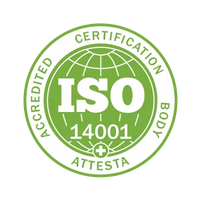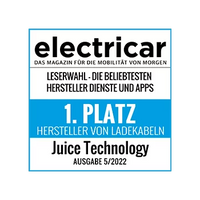This article is part of a three-part analysis of electromobility in the DACH region. After the first part examines the initial situation and the growing pressure on European manufacturers, the second part looks beyond the borders and discusses how international success stories, particularly the example of Norway, are paving the way for sustainable electromobility. The international comparison shows how targeted policy measures and investments can make a difference. The lessons from Norway offer a clear roadmap for how Europe can also meet the challenges.
Norway: A role model in electromobility
Norway is considered a leading example of the successful transition to electromobility. In 2024, the share of electric cars in new registrations exceeded 80%, making Norway the world leader. This result is the result of a consistent strategy that combines several elements: generous tax breaks for electric cars, high taxes on combustion engines, a comprehensive network of fast-charging stations, and the use of renewable energies, especially hydropower.
- Financial incentives and tax policy: Electric cars in Norway are exempt from VAT (25%) and import duties, while vehicles with combustion engines are made more expensive by high registration and CO₂ taxes. These measures make electric vehicles not only competitive but often even more affordable than conventional models. In addition, electric cars are exempt from road tolls and benefit from lower parking and ferry costs.
- Infrastructure and charging infrastructure: Norway has one of the world's densest networks of fast-charging stations, with over 6,000 charging points for the nearly 600,000 registered electric vehicles. Government investments and close cooperation with private operators have ensured the widespread expansion of charging infrastructure, ensuring that even remote regions can be easily served.
- Renewable energy and grid capacity: Around 98% of Norway's electricity comes from renewable energy sources, primarily hydropower. This ensures that electric vehicle operation is not only emission-free but also climate-neutral. The early adaptation of the electricity grids to the increasing demand for charging options also contributes to system stability.
Through these targeted measures, Norway has taken a pioneering role in electromobility and shows how government incentives, infrastructure policy and renewable energies can be combined to enable a successful transport transition. What is the situation in the DACH region?
Austria pursues a pragmatic approach, Switzerland a market-oriented strategy
Austria and Switzerland pursue different approaches in the automotive and supplier industries, which derive from their economic frameworks and political strategies. While Austria is closely intertwined with the German automotive market and pursues a progressive tax policy to promote electromobility, Switzerland relies on market-based incentives and technological innovation. Both countries have strong supplier industries, but with different focuses and sales markets. Different approaches are also evident in the expansion of charging infrastructure.
- Automotive industry: Austria is pursuing a progressive tax policy that makes electric vehicles more attractive, for example, through exemption from motor-related insurance tax and a CO₂-based tax on combustion engines. Switzerland, in contrast, pursues a market-based approach with tax incentives but without resorting to direct subsidies. Its focus is clearly on innovation and quality. Demand for high-quality electric vehicles is high in both countries.
- Supplier industry: Unlike Austria, Switzerland does not have a significant vehicle production capacity of its own, but both countries have strong supplier industries. In Austria, the 20 largest supplier companies generate approximately €26.3 billion in annual sales, while the Swiss supplier industry generates annual sales of approximately CHF13 billion. Austria benefits from close ties to the German automotive market and strengthens the competitiveness of its supplier industry through targeted innovation promotion. Swiss companies are often more diversified, serve other industries in addition to the automotive sector, and have a broader sales market. Due to technological specialization and high quality, the Swiss supplier industry is constantly gaining importance.
- Charging infrastructure: Austria is focusing on targeted expansion along traffic axes and tourist regions, while Switzerland has created an above-average dense and modern network thanks to its high purchasing power and focus on quality.
Austria and Switzerland are aligning their strategies with their specific economic structures, while Germany continues to face significant challenges.
Germany faces complex challenges
As Europe's largest automotive manufacturing location, Germany is confronted not only with the transformation of electromobility, but also with locational disadvantages, high production costs, and a fragmented infrastructure. While the market share of electric cars in new registrations was around 18% in 2024, growth remains below expectations. The reasons for this are diverse and complex – three of which are listed here.
- Production costs: Germany's greatest disadvantage as a location compared internationally is its high costs, which are primarily due to high wage levels, a high number of sick days, and rising energy prices. Urgent measures are needed to improve competitiveness.
- Charging infrastructure: With just under 100,000 public charging points, Germany is lagging behind demand. While the expansion of charging infrastructure has progressed, it remains unevenly distributed. Since 2020, homeowners and tenants have been entitled to a wallbox in their underground garage under the German Housing Ownership Modernization Act (WEMoG). While more and more parking spaces in urban centers are being equipped with charging stations and rapid charging hubs are increasingly being built, rural regions continue to suffer from a lack of supply. While expansion is progressing, approval processes and grid capacities are proving to be slowing factors.
- Industrial policy: Subsidies for research and development and buyer premiums were reduced, which abruptly slowed the momentum. Industry is calling for clear, stable framework conditions from policymakers to facilitate better planning, especially with regard to the lowered CO₂ limits. Market pressure must gradually increase to avoid an abrupt shock.
Germany, as a heavyweight in the automotive industry, must face up to its responsibilities. To remain internationally competitive, the country must invest specifically in innovations and drive forward decisive development steps. The stakes are high. After all, an entire supplier industry, which contributes a significant share to the gross domestic product in Germany, Austria, and Switzerland and on which many jobs depend, depends on Germany's success. A look at Norway shows that decisive policies and clear objectives can make the decisive difference. Part 3 examines the strategic decisions and concrete measures Germany should take to pave the way for a successful mobility transition.













